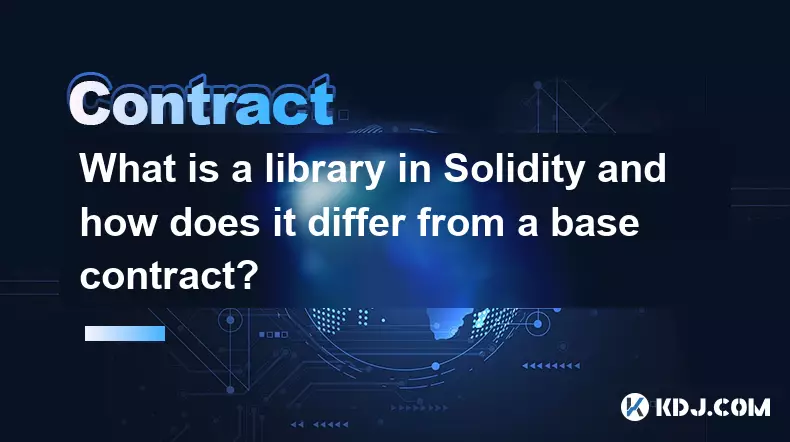-
 bitcoin
bitcoin $103128.103252 USD
-3.33% -
 ethereum
ethereum $3437.127692 USD
-4.86% -
 tether
tether $0.999700 USD
-0.02% -
 xrp
xrp $2.403993 USD
-5.73% -
 bnb
bnb $961.374676 USD
-4.11% -
 solana
solana $154.938665 USD
-8.18% -
 usd-coin
usd-coin $1.000113 USD
0.03% -
 tron
tron $0.298122 USD
0.30% -
 dogecoin
dogecoin $0.172428 USD
-5.76% -
 cardano
cardano $0.557625 USD
-7.13% -
 hyperliquid
hyperliquid $38.740701 USD
-6.51% -
 chainlink
chainlink $15.306051 USD
-7.51% -
 bitcoin-cash
bitcoin-cash $507.558648 USD
-3.26% -
 stellar
stellar $0.281899 USD
-6.74% -
 unus-sed-leo
unus-sed-leo $9.241811 USD
0.57%
How to verify a smart contract on the blockchain?
Smart contract verification ensures deployed bytecode matches the published source code, enabling transparency and trust on blockchains like Ethereum.
Nov 06, 2025 at 01:37 pm

Understanding Smart Contract Verification
1. Smart contract verification is the process of confirming that the source code of a smart contract matches the compiled bytecode deployed on the blockchain. This ensures transparency and trust, allowing users to audit what the contract actually does.
2. When a developer deploys a contract, they submit only the compiled bytecode to the network. Without verification, external parties cannot see the logic behind the contract, making it a potential vector for malicious behavior.
3. Verification involves uploading the original source code, compiler version, and compilation settings to a block explorer like Etherscan or BscScan. The platform then recompiles the code and checks if the generated bytecode matches the on-chain version.
4. A verified contract displays its full source code on the explorer, enabling anyone to read functions, variables, and logic. This promotes security audits and reduces the risk of interacting with fraudulent contracts.
5. Contracts can be written in high-level languages such as Solidity or Vyper. These must be compiled into Ethereum Virtual Machine (EVM) bytecode before deployment, and the same compilation environment must be replicated during verification.
Steps to Verify a Contract on Etherscan
1. After deploying your contract, navigate to the transaction receipt on Etherscan and locate the “Contract” tab. If the contract isn’t verified, you’ll see an option to “Verify and Publish” the source code.
2. Select the correct compiler version used during deployment. Mismatched versions will result in different bytecode and cause verification to fail.
3. Choose whether the contract contains optimization and specify the number of runs if enabled. Optimization alters bytecode structure, so accuracy here is essential.
4. Paste the complete Solidity source code into the provided field. If the contract uses multiple files or imports, use the 'Single File' or 'Multi-File' verification mode accordingly.
5. Submit the form. Etherscan will compile the code using your inputs and compare the output with the on-chain bytecode. A match results in a successful verification with a green checkmark.
Challenges in Smart Contract Verification
1. Source code must exactly match the deployed version, including whitespace, comments, and import statements. Even minor differences can lead to mismatched hashes and failed verification.
2. Libraries with complex dependency trees require careful handling. Each imported file must be correctly linked, and relative paths must reflect the original project structure.
3. Contracts created via factory patterns or using CREATE2 may not have straightforward addresses, complicating the identification of which instance needs verification.
4. Compiler optimizations and pragma directives affect output. Developers must remember the exact settings used during deployment, which might not be documented in fast-paced environments.
5. Proprietary or obfuscated code may intentionally avoid verification, raising red flags for users. While legal, this practice limits community trust and increases perceived risk.
Frequently Asked Questions
Can I verify a contract after a long time post-deployment?
Yes, there is no time limit for verification. As long as you have access to the original source code, compiler version, and settings, you can submit it for verification at any point.
What happens if verification fails?
Verification failure indicates a mismatch between on-chain bytecode and the recompiled version. You should double-check the compiler version, optimization settings, constructor arguments, and code integrity before resubmitting.
Is it possible to verify contracts on non-EVM blockchains?
Some non-EVM chains like Solana or Algorand have their own tools and methods for source validation, though the process differs significantly from Etherscan-style verification due to different architectures and execution models.
Do verified contracts guarantee safety?
No. Verification confirms code authenticity but does not imply security. A contract can be fully verified and still contain vulnerabilities or malicious functions. Independent audits are necessary to assess safety.
Disclaimer:info@kdj.com
The information provided is not trading advice. kdj.com does not assume any responsibility for any investments made based on the information provided in this article. Cryptocurrencies are highly volatile and it is highly recommended that you invest with caution after thorough research!
If you believe that the content used on this website infringes your copyright, please contact us immediately (info@kdj.com) and we will delete it promptly.
- Chinese DEX Sun Wukong: Surging Volumes and Stablecoin Reserves
- 2025-11-12 20:50:00
- Decoding Crypto's Crystal Ball: Analyzing Trends and Insights for 'Please Provide Me With The Text You Want Me To Analyze!'
- 2025-11-12 22:00:01
- Bitcoin Price Wobbles Amid ETF Flows and US Shutdown Drama
- 2025-11-12 21:20:01
- China, US, and a Bitcoin Heist: A Crypto Cold War?
- 2025-11-12 22:05:01
- VCI Global, Oobit, and OOB Tokens: A New Power Trio in Crypto?
- 2025-11-12 22:10:02
- Visa Direct, Stablecoins, and Instant Access to Funds: A New Era for Creators?
- 2025-11-12 22:10:02
Related knowledge

What is a Denial of Service (DoS) attack in a smart contract and what are its common forms?
Nov 10,2025 at 05:20am
Understanding Denial of Service in Smart Contracts1. A Denial of Service (DoS) attack in the context of smart contracts refers to a scenario where a m...

What is a cryptographic nonce used for in transaction signing?
Nov 11,2025 at 05:59am
Understanding Cryptographic Nonces in Blockchain Transactions1. A cryptographic nonce is a random or pseudo-random number used only once in the contex...

How does inheritance work in Solidity smart contracts?
Nov 11,2025 at 10:40pm
Inheritance in Solidity: Building Modular Smart Contracts1. Inheritance in Solidity allows one contract to adopt the properties and functions of anoth...

What is a Minimal Proxy Contract (EIP-1167) and how does it save gas on deployment?
Nov 12,2025 at 11:39am
What is a Minimal Proxy Contract (EIP-1167)?1. A Minimal Proxy Contract, standardized under Ethereum Improvement Proposal (EIP) 1167, is a lightweight...

What is a library in Solidity and how does it differ from a base contract?
Nov 12,2025 at 09:19am
Understanding Libraries in Solidity1. A library in Solidity is a special type of contract designed to hold reusable functions that can be shared acros...

How do you safely send Ether to another contract?
Nov 09,2025 at 06:40pm
Sending Ether to Smart Contracts: Key Considerations1. Verify that the receiving contract has a payable fallback function or a designated payable func...

What is a Denial of Service (DoS) attack in a smart contract and what are its common forms?
Nov 10,2025 at 05:20am
Understanding Denial of Service in Smart Contracts1. A Denial of Service (DoS) attack in the context of smart contracts refers to a scenario where a m...

What is a cryptographic nonce used for in transaction signing?
Nov 11,2025 at 05:59am
Understanding Cryptographic Nonces in Blockchain Transactions1. A cryptographic nonce is a random or pseudo-random number used only once in the contex...

How does inheritance work in Solidity smart contracts?
Nov 11,2025 at 10:40pm
Inheritance in Solidity: Building Modular Smart Contracts1. Inheritance in Solidity allows one contract to adopt the properties and functions of anoth...

What is a Minimal Proxy Contract (EIP-1167) and how does it save gas on deployment?
Nov 12,2025 at 11:39am
What is a Minimal Proxy Contract (EIP-1167)?1. A Minimal Proxy Contract, standardized under Ethereum Improvement Proposal (EIP) 1167, is a lightweight...

What is a library in Solidity and how does it differ from a base contract?
Nov 12,2025 at 09:19am
Understanding Libraries in Solidity1. A library in Solidity is a special type of contract designed to hold reusable functions that can be shared acros...

How do you safely send Ether to another contract?
Nov 09,2025 at 06:40pm
Sending Ether to Smart Contracts: Key Considerations1. Verify that the receiving contract has a payable fallback function or a designated payable func...
See all articles










































































